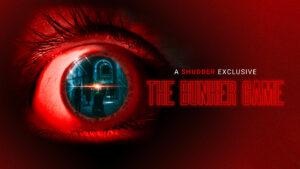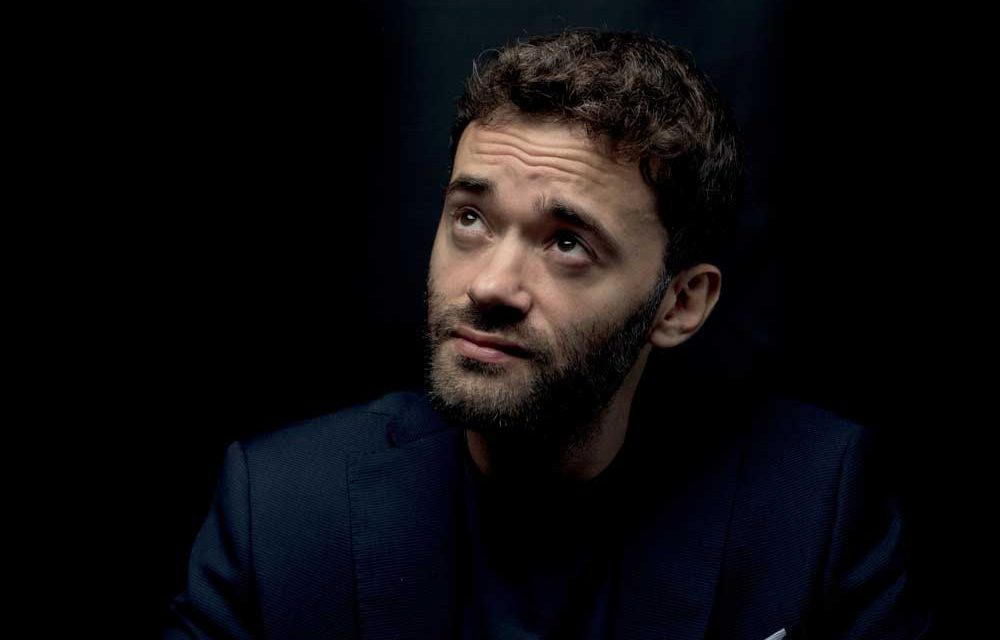In Roberto Zazzara’s The Bunker Game, some live-action role-playing (AKA larping) goes awry. Are the characters really playing a game? Are the dangerous occurrences the fault of the game’s planners or is something more supernatural afoot? Here are some questions with the movie’s composer, Umberto Smerilli, regarding the themes in the story and how they influenced his musical score. Currently, the film is available on Shudder and AMC+, and the soundtrack can be found here.
PopHorror: The characters in The Bunker Game end up acting almost like detectives. What are some techniques that you used to create a sense of mystery in music?
Umberto Smerilli: The two most important elements when creating this feeling are harmony and timbre. The right harmonies can really change a scene and create the feeling of unsettling darkness. These must avoid any reassurance in the frame of tonality or even negate this with unexpected solutions. The magic word here is ambiguity. The harmony must fluctuate restlessly between the known and the unknown.
On the other hand, the timbre is something that can tell a lot by itself. The mechanism is pretty much the same. It’s crucial to find sounds that resemble something familiar, but at the same time, they are not identifiable as if there was still something missing in the puzzle. This may be seen as a practical application of Freud’s concept of the Uncanny in the field of music. Furthermore, I also approached this score on a synesthetic level trying to give a sense of darkness and roughness to the touch.
PopHorror: In addition to the characters being trapped, the story is about Greg’s [Lorenzo Richelmy] disappearance, and it takes place underground [the other main star is Gaia Weiss]. What sort of challenges do those story elements create for a musical score?
Umberto Smerilli: I really wanted to make the audience feel as if the bunker was overtaking them, just like the characters in The Bunker Game. So I tried to musically depict these corridors as bottomless in the belly of the mountain. I needed something unique that I hadn’t seen before, so I invented what I call the Smerillophone, which is a wind instrument made of plastic pipe connected to a sax mouthpiece. It makes a fantastic dark sound. Once I discovered this, that really became the turning point in the scoring process.
PopHorror: There are some strange hallucinations, and the players of the game have trouble distinguishing what’s real from what’s fake. Did this inspire the score at all?
Umberto Smerilli: Yes, definitely. The score continuously blends elements coming from very different languages and musical traditions. I combined techno, Italian Opera, and classic cinema scores of the ’50s. This mixture of sounds is very reflective of the complexity of the plot and where the characters are trapped, not only in space but also in time, suspended between the present and a haunting past. I really wanted the audience to wonder if the score was brand new, or something plucked from a long time ago.
PopHorror: The story is then replaced by live-action footage of the surviving players in the bunker. Did you change the score at all for these sequences?
Umberto Smerilli: The flashback sequence triggered by the projection of raw footage is a tricky scene. We go from the present to the past ducking into the footage projection. The music also has a sense of morphing in the tone too. We start from a very dark atmosphere, then it changes into something more hypnotic as if the audience and the protagonist are enchanted by a spell. Then, when we are finally trapped in the past and the magic has been done, the music goes off.
Unraveling

PopHorror: As the survivors discover more secrets, they become more and more frightened and unravel. Would it be fair to call The Bunker Game a paranoid psychological- supernatural thriller?
Umberto Smerilli: Yes, I think that would be a fitting label, but I also think there is something more to it.
PopHorror: Some parts of this film reminded me of the claustrophobic elements of Alien. Do you have any favorite movie scenes—from The Bunker Game or elsewhere—that have that feeling of being trapped or closed in?
Umberto Smerilli: Very nice observation! Alien was definitely a reference we discussed when we were thinking about the overall tone of the score. There is a director I really love who is an absolute master at depicting claustrophobic situations, and that is Roman Polansky. I feel like most of Polansky’s plots are centered around the fact that the characters find themselves trapped physically, socially, or mentally.
In The Tenant and Rosemary’s Baby, the protagonists are surrounded by claustrophobic communities. In Knife in the Water, Cul-de-sac, and The Ghost Writer the characters are physically trapped. In Repulsion a young woman is a prisoner of her mental condition. In J’accuse everything revolves around the concept of jail. I really wish I could work with Roman one day.
Part Human, Part Animal Creature
PopHorror: Speaking of bunkers, I don’t know how familiar you are with the Romero school of horror movies, but the bunker reminds me of Day of the Dead. Do you have a favorite George A. Romero movie?
Umberto Smerilli: I think Night of the Living Dead was such a breakthrough in the history of cinema, I would definitely pick this masterpiece as my favorite.
PopHorror: Quite often, the erratic movements of possessed humans in supernatural films seem like part human, part animal creatures. Do you think generalized belief in spirits causes fear of our animal nature? These ideas do seem to clash, including within art.
Umberto Smerilli: Great question. I don’t think it’s about the fear of our animal nature, but more about the possibility of getting detached from it. Our health relies on our state of integration of every aspect of our human nature. Disintegration is one of our deepest, worst fears.
We all are part human, part animal creature, but as long as you can find harmony between these two aspects, everything is blessed with beauty. On the contrary, when the aforesaid erratic movements clearly show the disconnection between body and soul, this results in a deep horrifying effect.

Future Projects and Favorite Composers
PopHorror: What are some other projects you are currently working on?
Umberto Smerilli: I am already working on a new project with Roberto Zazzara. It’s a documentary about a very peculiar race that has taken place in a small village in Abruzzo every year for centuries. The participants descend from a steep cliff mountain into stones and brambles barefooted. An apparently inexplicable religious rite…
PopHorror: Who are some of your favorite composers and/or musicians?
Umberto Smerilli: I really love Bernard Herrmann. His style has influenced me a lot; I think Vertigo is the best score of all time. I also have a passion for Giacomo Puccini, I feel like he is a great film composer even if he never scored a movie. His approach to narrative consisted in weaving a music dramaturgy. This is a priceless legacy for us. For The Bunker Game, I also studied and really appreciate Colin Stetson’s score for Hereditary by Ari Aster.
We would like to thank Umberto Smerilli for answering these questions!
 PopHorror Let's Get Scared
PopHorror Let's Get Scared




